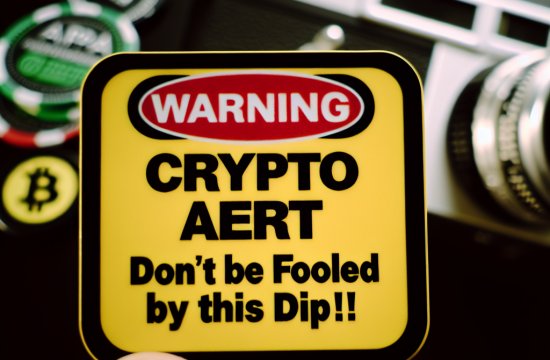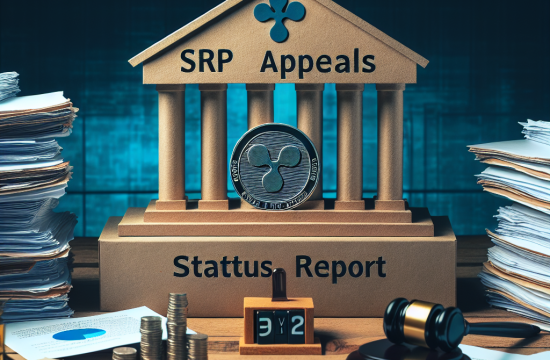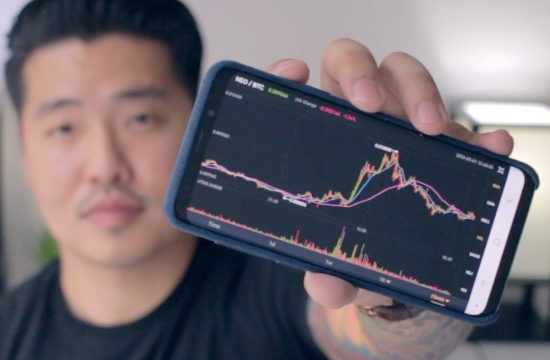The Biden Administration has intensified oversight on the U.S. bitcoin mining sector through an Energy Information Agency (EIA) emergency survey, portraying electricity usage by miners as a significant threat to national grid stability. This move, which demands detailed disclosures from miners, mirrors actions in Venezuela that led to mining confiscations, signaling a concerning trend towards a full registry of mining activities. The article advocates for the bitcoin mining community to unite against this overreach, emphasizing the positive impact miners have on grid stability through demand response programs. It critiques the EIA’s legal and procedural justifications, highlighting potential legal challenges and the necessity for industry solidarity to protect mining autonomy against regulatory encroachment.
- The emergency authorization claimed by the EIA for the mining survey is woefully inadequate, and doesn’t meet the bare minimum requirements imposed by the enabling statutes.
- There are technical defects in the EIA’s authorization surrounding the collection of Personally Identifiable Information. Also, the EIA has not done enough to clarify who the required respondents are.
- While an affected miner and an industry group can sue to block this action, there is a strong argument that a sovereign State, particularly Texas because of ERCOT, could also have standing to sue because the EIA’s action directly oversteps state sovereignty concerns.
- A lawsuit should easily meet the requirements for a preliminary injunction, and, if successful, a permanent injunction on the use of the emergency claim here.
- Speed is a top concern, as the timeframe for this survey is extremely short.
Part 1: Intro
The EIA finds itself at the center of a contentious debate due to its hurried and mandatory survey of cryptocurrency mining operations. The core issue is the EIA’s use of emergency powers to require data collection from cryptocurrency miners, justified by misplaced concerns over energy consumption and system reliability amid rising Bitcoin prices and environmental concerns.
This article explores the legal, procedural, and practical dimensions of the EIA’s actions, examining the agency’s rationale and its implications for public engagement in regulatory processes. By examining the legal frameworks that govern such emergency rulemakings, including the Administrative Procedure Act (APA) and the nuances of “good cause” exemptions, as well as the Paperwork Reduction Act (PRA), this analysis lays bare the EIA’s deficient process in pushing forward with this action. This piece then outlines a potential set of legal arguments that could be used to challenge the survey, and who can bring forth the challenge.
For further details on the EIA and the survey itself, see this piece by Charlie Spears and Storm Rund, as well as this piece by Marty Bent.
At its base, the Energy Information Agency does indeed possess the power under statute to collect the data they want to collect in this survey. 15 USC §772. (I will not argue here whether or not that power is itself legitimate, and there are good arguments that it may not be. Rather, I take aim at the process used by the EIA in order to show an expedient route to block the current action.)
Data collection like this should only be done through a traditional notice-and-comment process, where the public has adequate notice that the agency intends to take an action, and both the public and the agency isn’t forced to hurry with a response. Recall the FinCEN rulemaking which ended a few weeks ago. The public was allowed three months to examine it, and generate comments, such as the awesome one drafted by Samourai Wallet and signed by 25 other Bitcoin companies.
The APA requires that agencies follow procedures such as notice-and-comment to afford the public, including those with “highly relevant expertise in the subject,” the opportunity to participate in rulemaking through submitted comments.
Desirée LeClercq, Judicial Review of Emergency Administration, 72 Am. U. L. Rev. 143, 165 (2022-2023) (emphasis added)
As you can see, the EIA is not operating with access to “highly relevant expertise”:
Several cryptocurrencies, most notably Bitcoin, use a proof of work approach that requires cryptocurrency miners to validate blocks of transactions by solving complex cryptographic puzzles that require significant computational power.
EIA Supplemental Materials (emphasis added)
An agency may short-circuit the normal notice-and-comment process “when the agency for good cause finds (and incorporates the finding and a brief statement of reasons therefore in the rules issued) that notice and public procedure thereon are impracticable, unnecessary, or contrary to the public interest”. 5 USC §553(b)(4)(B). Similarly, under the PRA, an agency may expedite certain procedures when “the agency cannot reasonably comply with the provisions of this subchapter because…public harm is reasonably likely to result if normal clearance procedures are followed”. 44 USC §3507(j)(1)(B)(i).
BUT, and it’s an absurdly massive “but”, the emergency procedure they’re operating under is comically tenuous.
Agencies have a long history of invoking the “good cause” exception of the Administrative Procedure Act (APA) in order to short-circuit public involvement, and the courts have increasingly become suspicious of such extremely loose uses of emergency rules. “The need for public participation in administrative rulemaking is ‘axiomatic.'” Ernest Gellhorn, Public Participation in Administrative Proceedings, 81 YALE L.J. 359, 369 (1972).
Several cases through the COVID era have begun to show judicial impatience with agencies applying emergency powers in situations where there is no legitimate rationale to do so.
The EIA’s justifications here for their emergency data collection can be summarized as:
- Bitcoin’s price has gone up.
- Higher prices incentivize more mining.
- It’s cold outside right now.
- Something bad happened five years ago.
- We actually don’t really know if it’s that bad.
- But we feel like it might be, so we need to collect data NOW NOW NOW.
As evidence, the price of Bitcoin has increased roughly 50% in the last three months, and higher prices incentivize more cryptomining activity, which in turn increases electricity consumption. At the time of this writing, much of the central United States is in the grip of a major cold snap that has resulted in high electricity demand. The combined effects of increased cryptomining and stressed electricity systems create heightened uncertainty in electric power markets, which could result in demand peaks that affect system operations and consumer prices, as happened in Plattsburgh, New York in 2018. Such conditions can materialize and dissipate rapidly. Given the emerging and rapidly changing nature of this issue and because we cannot quantitatively assess the likelihood of public harm, EIA feels a sense of urgency to generate credible data that would provide insight into this unfolding issue.”
The OMB’s Statement of the EIA Justification for emergency action (Emphasis Added)
This justification is shockingly flimsy for the extraordinary power of an emergency action, and courts have blocked agencies for not having sufficient “good cause” when they had significantly stronger justifications than the EIA does here. See, i.e., Chamber of Commerce of the United States v. U.S. Department of Homeland Security, 504 F. Supp. 3d 1077 (N.D. Cal. 2020).
If challenged, a court should block the EIA’s data collection action (ie: grant an injunction preventing the EIA from enforcing it). Below we go into greater detail as to how such a challenge could look, and who can bring it.
Part 2: Standing
The initial component of any case analysis is a determination of who can bring a lawsuit. The basic requirements for standing are that a plaintiff must personally have:
- suffered some actual or threatened injury;
- the injury can fairly be traced to the challenged action of the defendant; and
- that the injury is likely to be redressed by a favorable decision.
See Lujan v. Defs. of Wildlife, 504 U.S. 555, 560–61 (1992).
Clearly, any miner that has received a letter from the EIA falls within that category. According to their OMB statement, the EIA has a list of 82 miners in mind that they intend to demand information from, and any of those 82 would be able to sue here.
What about a miner that is not part of those 82? That’s a harder case. First of all, at present the list of 82 miners has not been made available, so a miner might not yet know if they are required to respond or not. Furthermore, it’s not immediately clear if a miner who doesn’t receive the letter and is not on the list of 82 target miners is required to respond. The EIA form itself states that those “who are required to complete this form are all commercial cryptocurrency mining facilities in the United States.” (emphasis added). A “commercial cryptocurrency mining facility” is not clearly defined, so a miner operating on a commercial site could reasonably believe that they are required to respond.
Another level of standing is organizational and associational standing. Here, an industry group can assert organizational standing when its mission is directly impacted by the agency action. See, i.e. PETA v. USDA, 797 F.3d 1087 (D.C. Cir. 2015) (holding that the USDA’s challenged non-action plainly impaired PETA’s activities in a non-speculative manner by requiring PETA to divert and redirect its limited resources to counteract and offset the defendant’s unlawful conduct and omissions.) Alternatively, an organization can assert associational standing “to bring suit on behalf of its members when: (a) its members would otherwise have standing to sue in their own right; (b) the interests it seeks to protect are germane to the organization’s purpose; and (c) neither the claim asserted, nor the relief requested, requires the participation of individual members in the lawsuit.” See Hunt v. Washington State Apple Advertising Comm’n, 432 U.S. 333, 343 (1977); see also Ass’n of Am. Physicians & Surgeons v. Tex. Med. Bd., 627 F.3d 547, 550 (5th Cir. 2010); and Ctr. for Biological Diversity v. EPA, 937 F.3d 533, 536 (5th Cir. 2019).
It is conceivable that an organization which represents miners could potentially have both components of standing, but clearly associational standing will be met. The most contentious element would be where a specific member need not be directly involved with the lawsuit, however as this is an action to ensure that a regulatory agency follows proper procedure, and that the relief is to enjoin the agency from proceeding, it seems unlikely that a specific miner would be required to be a party here.
But there is one additional litigant that could bring this suit, and it would be an extremely interesting one: a State. Under the doctrine of parens patriae, a State has the ability to maintain a lawsuit on behalf of its citizens if it can meet additional burdens. See Alfred L. Snapp & Son, Inc. v. Puerto Rico ex rel. Barez, 458 U. S. 592, 607 (1982) (“In order to maintain [a parens patriae action], the State must articulate an interest apart from the interests of particular private parties, i.e., the State must be more than a nominal party. The State must express a quasi-sovereign interest.”). In Massachusetts v. EPA, the Supreme Court elaborated on parens patriae by extending Massachusetts special solicitude to sue, based on that state’s quasi-sovereign interest in protecting its environment. 549 U.S. 497, 518 (2007) (“Well before the creation of the modern administrative state, we recognized that States are not normal litigants for the purposes of invoking federal jurisdiction.”). See also, Lexi Zerrillo, Who’s Your Sovereign?: The Standing Doctrine of Parens Patriae & State Lawsuits Defending Sanctuary Policies, 27 Wm. & Mary Bill Rts. J. 573 (2018); Tara L. Grove, When Can a State Sue the United States, 101 Cornell L. Rev. 851 (2016).
Using the State of Texas as an example, I believe there is a reasonable argument that Texas itself, and perhaps other states, would be able to achieve standing in this specific situation under parens patriae and special solicitude. ERCOT is a Texas quasi-governmental agency which is tasked with regulating the energy sector within the State of Texas. Indeed, in 2023, the Texas Supreme Court recognized ERCOT as having sovereign immunity, holding “that ERCOT is entitled to sovereign immunity because PURA “evinces clear legislative intent” to vest it with the ” ‘nature, purposes, and powers’ of an ‘arm of the State government’.” CPS Energy v. Elec. Reliability Council of Tex., 671 S.W.3d 605, 628 (Tex. 2023).
The EIA’s action here, using emergency powers as they have, represents a specific insult to Texas, as it deprives ERCOT the ability to engage with the agency process as experts in their domain. Indeed, ERCOT leads the country on the use of Bitcoin miners as large flexible loads, and so not only has the EIA’s emergency action deprived Texas of the ability to comment on the thrust of the action, it has deprived the rest of the country the benefit for ERCOT’s expertise in this field.
Furthermore, the EIA’s emergency action also impacts the ability of Texas to engage in the proper regulation of their internal grid, through ERCOT, which being entirely internal to the State of Texas, is not covered by the Commerce Clause, and is outside of much of the jurisdiction of the Federal Energy Regulatory Commission. When a State’s regulatory framework is at risk due to a Federal regulation, such as it is here, the special standing of a State has been upheld. See, i.e., Wyoming v. United States, 539 F.3d 1236, 1241-42 (10th Cir. 2008)(“In light of the “special solicitude” the Massachusetts Court afforded to states in our standing analysis, id., and because our discussion below demonstrates that Wyoming’s stake in this controversy is sufficiently adverse, we conclude that Wyoming has Article III standing.”).
The State of Texas has a unique and specifically identifiable quasi-sovereign interest here, and we believe that they would be an ideal plaintiff or co-plaintiff on this matter.
Part 3: General Background on “Good Cause” Emergency Rulemaking
The Administrative Procedure Act (APA) governs the process by which federal agencies develop and issue regulations, including a critical mechanism known as “emergency rulemaking.” This process allows agencies to implement rules without adhering to the typical notice-and-comment requirements under certain circumstances, notably when there is “good cause.” However, the invocation of this exception has been a contentious issue, particularly when agencies’ justifications are deemed insufficient.
Understanding APA’s Emergency Rulemaking and the “Good Cause” Exception
The APA aims to guarantee public participation, transparency, and accountability in federal rulemaking. Under 5 USC §553. agencies are generally required to provide notice of proposed rulemaking and allow the public to comment. However, §553(b)(4)(B) articulates a “good cause” exception, permitting agencies to bypass these procedures if they find that notice and comment are “impracticable, unnecessary, or contrary to the public interest.”
“Good cause” is predicated on the necessity for swift action by the agency under emergency circumstances or when the rule’s immediate implementation is critical to the public good. The exception is meant to be applied narrowly, reflecting Congress’s intention to maintain the participatory nature of rulemaking while acknowledging the need for flexibility in genuine emergencies.
Legal Standards for “Good Cause”
The APA’s requirement of notice and comment is ” ‘designed to assure due deliberation of agency regulations’ and ‘foster the fairness and deliberation of a pronouncement of such force.’ ” E. Bay Sanctuary Covenant v. Trump, 932 F.3d 742, 745 (9th Cir. 2018)(quoting United States v. Mead Corp., 533 U.S. 218, 230 (2001), quoting Smiley v. Citibank (S.D.), N.A., 517 U.S. 735, 741 (1996)). The good cause exception, in turn, “is essentially an emergency procedure[.]” United States v. Valverde, 628 F.3d 1159, 1165 (9th Cir. 2010) (quoting Buschmann v. Schweiker, 676 F.2d 352, 357 (9th Cir. 1982)). The exception also is “narrowly construed” and “reluctantly countenanced.” California v. Azar, 911 F.3d 558, 575 (9th Cir. 2018) (quoting Alcaraz v. Block, 746 F.2d 593, 612 (9th Cir. 1984)).
Chamber of Commerce of U.S. v. U.S. Dep’t of Homeland Sec., 504 F. Supp. 3d 1077, 1080 (N.D. Cal. 2020)(Some internal citations omitted)
The courts’ interpretations of what constitutes “good cause” have varied, leading to an evolving jurisprudential landscape. The determination of good cause hinges on the agency’s ability to convincingly demonstrate that the circumstances necessitating the rule are urgent enough to justify forgoing the usual procedural requirements. This justification must be more than mere assertions; it requires substantial evidence that adhering to the normal rulemaking process would be impracticable, harmful, or contrary to public interest.
Historically, courts have applied a deferential arbitrary-and-capricious review to agency assertions of good cause. Beginning in 2014, and cemented by cases related to COVID, courts began adopting a significantly more stringent de novo review standard. De novo review entails a thorough examination of the agency’s justification without deferring to the agency’s expertise or discretion. This evolution in judicial scrutiny underscores the growing concern with increasingly perfunctory and pretextual emergency determinations. “The declaration of emergency becomes a ‘self-fulfilling prophecy’ in which the executive has judged a situation an emergency and frames its response in such a way as to construct a new emergency reality. Emergency administration, if left unchecked, becomes the norm.” Desirée LeClercq, Judicial Review of Emergency Administration, 72 Am. U. L. Rev. 143, 170 (2022-2023) (emphasis added).
Going back to Chamber of Commerce, there the court found that even considering the extreme situation of the COVID pandemic, and its undeniable impact on domestic employment, the Agency could not justify using an emergency rule to make changes to the H1-B visa program.
Another case, Ass’n of Cmty. Cancer Ctrs. v. Azar, 509 F.Supp. 3d 482 (D. Md. 2020), found that an agency’s justification for an emergency action, which attempted to regulate allegedly runaway drug prices during COVID, fell far short of the requirements needed here:
The purported justification for invoking the good cause exception in this case falls flat. First, like the factually deficient justifications cited in Tennessee Gas Pipeline and Sorenson Communications, CMS here relies more on speculation than on evidence to establish that the COVID-19 pandemic has created an emergency in Medicare Part B drug pricing sufficient to justify dispensing with valuable notice and comment procedures.
…
While it may be that the anticipated benefits of the rule eventually would be borne out by empirical study, CMS’s conclusory and speculative assertions do not provide, particularly in the short term, a reasoned basis sufficient to justify denying to the public the beneficial requirements of the sixty-day notice and comment period. An agency may not rely solely on its own expertise to establish good cause; findings of fact are required.
Ass’n of Cmty. Cancer Ctrs. v. Azar, 509 F.Supp. 3d 482 (D. Md. 2020)(citing Sorenson Commc’ns Inc. v. Fed. Commc’ns Comm’n, 755 F.3d 702, 706 (D.C. Cir. 2014) and Tennessee Gas Pipeline Co. v. FERC, 969 F.2d 1141, 1145 (D.C. Cir. 1992))
Finally, in ITServe All., Inc. v. Scalia, the court didn’t apply the de novo standard because the agency was so deficient in its evidence and analysis that there was no need even to consider the standard. “For these reasons, even under the arbitrary and capricious standard, Plaintiffs are likely to succeed in showing that no emergency existed in the context of the H-1B program, and therefore, that the Department’s argument that it was impracticable to comply with the standard rulemaking procedure was insufficient. ” ITServe All., Inc. v. Scalia, Civil Action No. 20-14604 (SRC), 14 (D.N.J. Dec. 3, 2020)
The PRA Angle
The EIA might argue that the Paperwork Reduction Act (PRA) is the only aspect that controls here, and attempt to frame the argument solely in that realm. As I stated above, the relevant standard under the PRA is when an “agency cannot reasonably comply with the provisions of this subchapter because…public harm is reasonably likely to result if normal clearance procedures are followed”. 44 USC §3507(j)(1)(B)(i). This power is explicitly invoked by the EIA under 5 CFR §1320.13.
While there’s essentially..








